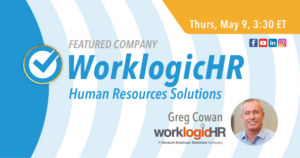The Best Employee Engagement Strategy Does Not Require More Pay Alone

Hello AADOM Tribe, and happy new year! 2023 has many possibilities (as any new year…), and this year, we want to focus on reigniting employee engagement within your practice. This is the third installment of our AADOM HR Crash Course, where we are going through the entire employee lifecycle based on questions you asked us at the 2022 AADOM Conference, so in case you missed them, be sure to go check out our first and second installment which both focus on hiring.
Now that we’ve covered that, it’s time to move on to set your practice up for success by creating a culture of engagement. Keep in mind it takes practice and effort to improve employee engagement. However, if you keep at it, you will see lasting results in retention and overall success and growth within your team as you help employees develop and highlight new skills. This will be a two-part article (engaged workforce is a big topic), so be sure to return next month for the second portion.
Let’s Start From the Beginning
Employees don’t have to love everything they do to be engaged in their work. But, at some point, the things that matter most to your employees go beyond simply collecting a paycheck. When an employee is “engaged,” it means that they understand and appreciate their role in your business and its importance in helping you meet your business goals. When your employees can see themselves in and understand their contribution to your business’ goals and its greater purpose, they feel invested in its success and want to stick around and do their
part toward making continued success a reality.
Engagement in the workplace is a hot topic in business management circles lately. But what exactly is employee engagement? Why does it matter? And what can employers do to keep their teams engaged and operating at the top of their potential? Let’s start with a definition to better unpack these questions and understand what makes your employees tick.
Employee engagement is the level of an employee’s commitment and connection to your business and its goals. Further, engagement relies on each of your team members being able to see their role and personal success as an intricate part of connecting to your business and its goals.
Making efforts to maximize engagement at your business is a crucial component of your HR strategy because better engagement has been shown to correlate directly with better retention, higher productivity, and increased revenue and profits. When faced with unexpected turnover from employees quitting, most employers assume that employees usually leave because they were offered better pay, better benefits, or additional incentives elsewhere. The knee-jerk reaction is often to go into replacement mode and address the first two items by increasing compensation and benefits offerings.
Of course, you need the pay and benefits you offer to be competitive. But the best employee engagement strategies aren’t all about pay and benefits; you don’t have to be the top spender in your area to hold on to great employees. Increasing pay to bring in new hires can create its own set of problems with existing employees. Employees want to stay in a role because they believe their work is meaningful. And, as an owner or manager, you probably have more influence in this area than you realize.
Now, let’s talk about what you can do to increase engagement at your business.
Perform a Pulse Check
A pulse check is a great place to start when looking to increase employee engagement at your business. But before you try to evaluate your team’s level of engagement, it’s essential that you first take a look at your level of engagement as an owner or manager.
To set the stage for your employees to thrive and run your company for you, you must be ready to serve as the standard bearer for good engagement. This means, at a minimum, being consistent with your policies, having integrity around compliance (no favorites), and being an example of what it means to embody your company’s mission, vision, and core values. Engaged leaders support their team members, value input from their employees, and raise good ideas – they don’t stifle, dismiss, or micro-manage.
To check your level of engagement, ask yourself questions like “Do I find joy in my work?” “Do my employees feel comfortable coming to me with questions or problems?” and “What have I done to improve engagement at my business?” After all, you can’t ask people to engage with you, problem-solve for themselves, accomplish goals, and help you run your business if you aren’t holding up your end of the bargain as a leader.
Once you feel like you’ve got a good grasp on your level of engagement and are ready to lead the charge for your team, it’s time to take a look at your team members. Identifying engaged employees means looking for those that are open about their successes and challenges, who problem-solve and bring ideas to the table, appear to be self-motivated, and are receptive to both positive and negative feedback.
Signs that an employee may be disengaged include being maliciously sarcastic or passive-aggressive, arriving late or leaving early consistently, avoiding responsibility, and passing blame.
Check out the Engagement and Retention Guide…Open a new window to learn more… for a more detailed list of engagement indicators for both employers and employees. Performing a pulse check for yourself and your team will help establish a baseline for how engaged your team is and will make it easier to measure the success of your efforts to increase engagement moving forward.
Now that you’ve added the all-important pulse check to your HR toolkit let’s take a closer look at pay and benefits.
Pay and Benefits (Total Compensation)
As mentioned earlier, pay and benefits are only some factors that affect engagement at your business, but compensation is still an important consideration. Consider Maslow’s Hierarchy of Needs: Your employees need a living wage that provides enough to cover the costs of basic needs like food, water, shelter, and security before they can even think about higher-level concepts like self-fulfillment.
As a matter of engagement, employees also want to know that they are being paid fairly compared to other people who do similar work in their area. The key here is that “self-fulfillment” is another way of saying engaged. Here are a few tools and things to consider when looking at your pay and benefits package.
Therefore, it’s in your best interest as a business owner or manager to ensure that the salary ranges you set for your employees are fair and equitable when held up against current ranges for similar positions in your business’ location. One beneficial tool for establishing fair salary ranges is the Foreign Labor Certification Data Center’s Online Wage Wizard…Open a new window to the tool…. This free public tool makes it easy to see what average salary ranges are in your area for almost any position.
The pay bands you assign to a position should always be based on clear, objective criteria, such as the level of education or professional certifications required to hold that position, the level of specialization required to execute the duties of the role, and the amount of experience an employee has in their role or position. This prevents situations in which employees might assume that your process for setting salaries is arbitrary or based on unfair – or even illegal – criteria. Click here…Opens in a new window… for a more detailed explanation of what pay bands are and how to set pay bands.
A word of caution, you’ll also want to be mindful of balancing efforts to attract new talent with efforts to retain the great employees you already have. For example, offering new employees a much higher starting salary than that provided to employees who already work for you could hurt retention efforts and engagement levels with those tenured employees. Remember – employees can legally discuss their wages and working conditions…Click to learn more in a new window… under the National Labor Relations Act.
You know this, but we are going to repeat it. Just as pay is an important consideration to evaluate, so are other benefits, such as paid time off, new parent and medical leave policies, health insurance options, retirement plans, flexible remote work policies, continuing education opportunities, and community service opportunities. Smaller businesses may not be able to compete with larger businesses in terms of benefit offerings, but every little bit counts when it comes to your engagement and, of course, your recruitment efforts.
Stay Tuned…
In our next installment of this AADOM HR Crash Course, we will discuss the essential component which provides the foundation for our first three articles. Building a culture of engagement, goal setting, accountability, rewards, and celebrations. Consider this installment a good starting point to evaluate your current level of engagement within your business. We know this can be a daunting task, so take some time to see where you are starting, so you can figure out where you need to go (and be patient with yourself while you do it). If you want to listen to a few short topics, go to Paul’s Podcast called What the Hell Just Happened, sign up for his podcast, or listen to the episodes that interest you. Do the work, consider your possibilities, and stay tuned for the next article.






